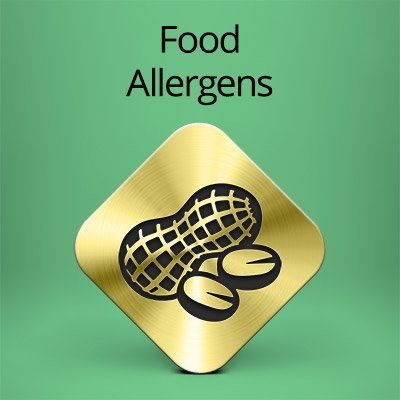Level 3 Award in Food Allergen Management in Catering (RQF) – Classroom Course

This qualification will help you understand the process for ensuring that accurate ingredients information is available for customers and will provide you with the tools and controls necessary to comply with the legislation.
The course covers the following:
- The effective management of food ingredients and allergens.
- The difference between food allergens and food intolerances.
- The business processes and products from supplier to customer.
- How a business can communicate allergen risks to their staff and customers.
- Allergen management and identifying allergen sin the business.
- Hygiene considerations with regard to allergen and ingredient control.
- Control of contamination and cross-contamination of allergenic ingredients.
The qualification is achieved by taking a one-day classroom based course and is assesses by a learner workbook set by HABC (Awarding Body).
SUITABLE FOR GROUPS OF 6+
Call
0800 074 1583
for further details
Example Allergy Cases
Kirsty Richardson visited a well known Italian restaurant chain for her wedding anniversary, she notified staff that she could not consume gluten. Kirsty was given pasta that contained wheat. Within a couple of hours Kirsty became nauseous and began vomiting. The restaurant chain was fined £8,000 and £9,000 cost. 2014.
In some cases, a food allergy can be triggered after eating a certain food and then exercising. This can lead to anaphylaxis, in severe cases. This is know as exercise-induced food allergy or exercise-induced anaphylaxis.
Maisie Durant died after exercise triggered a fatal nut allergy. After going to the gym, Maisie ate a cereal bar containing nuts, when she returned home she collapsed. Maisie had a nut allergy and did not know that the bar contained nuts. 2015.
The Food Information Regulations 2014 came into force on the 13th December 2014 and apply to all catering and retail businesses that serve or sell food. This means that food business operators will have to supply information for every item served or sold that contains any of the 14 major allergens as ingredients.
It is good practice to control the risks of allergen cross-contamination, as an allergic reaction can be produced by a tiny amount of a food ingredient that a person is sensitive to (for example a teaspoon of milk powder, a fragment of peanut or just one or two sesame seeds). So it is essential to eliminate the risk of allergen cross-contamination if offering to provide an ‘allergen-free’ menu item or product.
Food that is perfectly safe for one person to eat may be extremely hazardous for another. Some people experience allergic reactions to certain foods – reactions that range from mild to life-threatening.
It is important that everyone who prepares or handles food, in any context is fully aware of the foods that may trigger an allergic reaction and knows what precautions need to be taken – to ensure that customers do not eat a food that they are trying avoid.
To be able to avoid the cause of their food allergy, customers need complete and correct information to allow them to make informed choices about the food they eat.
